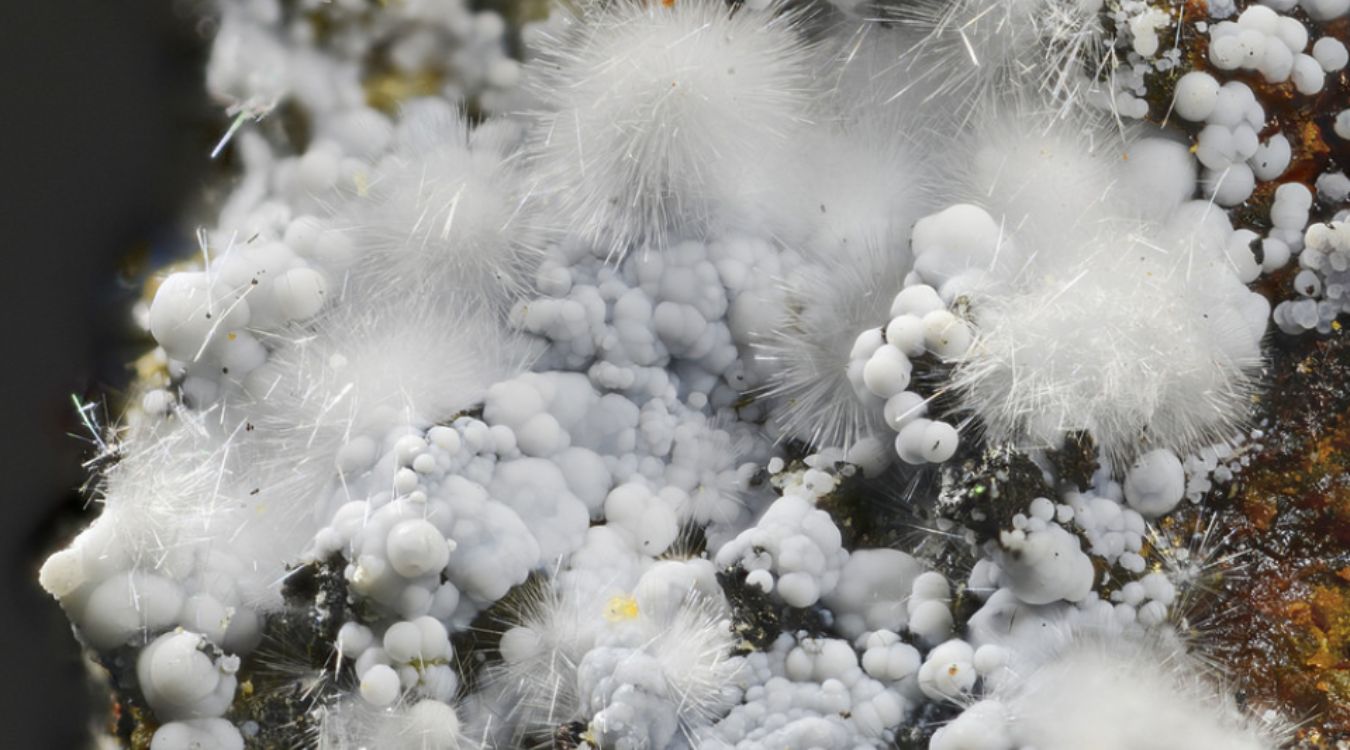
Canavesite is a rare mineral that has piqued the curiosity of many geology enthusiasts. Found primarily in Italy, this mineral boasts a unique composition and striking appearance. But what exactly makes Canavesite so special? For starters, its chemical formula is Mg2(HBO3)(OH)•3H2O, which includes magnesium, boron, and water molecules. This combination results in its distinctive crystal structure and color. Why should you care about Canavesite? Understanding this mineral can offer insights into geological processes and the conditions under which it forms. Whether you're a budding geologist or just someone fascinated by Earth's hidden treasures, learning about Canavesite can be both educational and exciting. Let's dive into 25 intriguing facts about this captivating mineral!
Key Takeaways:
- Canavesite is a rare, water-containing mineral found in specific geological settings. Its unique properties make it valuable for collectors, researchers, and educational purposes.
- Named after the Canavese district in Italy, canavesite's rarity, aesthetic appeal, and insights into hydrothermal processes make it a prized addition to mineral collections and a subject of scientific research.
What is Canavesite?
Canavesite is a rare mineral that has intrigued geologists and mineral enthusiasts alike. Found in specific geological settings, it offers a glimpse into the complex processes that shape our planet. Here are some fascinating facts about this unique mineral.
-
Canavesite is a hydrous magnesium borate mineral. It contains water molecules within its crystal structure, making it part of the borate mineral family.
-
The mineral was first discovered in Italy. Specifically, it was found in the Brosso mine in the Canavese district, which is how it got its name.
-
Its chemical formula is Mg2B2O5·3H2O. This formula indicates that canavesite is composed of magnesium, boron, oxygen, and water.
-
Canavesite forms in hydrothermal environments. These are areas where hot, mineral-rich water interacts with rocks, leading to the formation of various minerals.
-
It typically appears as white or colorless crystals. The crystals can be transparent to translucent, adding to their visual appeal.
Physical Properties of Canavesite
Understanding the physical properties of canavesite helps in identifying and studying this mineral. Here are some key characteristics.
-
Canavesite has a monoclinic crystal system. This means its crystal structure is shaped like a skewed rectangle, with three unequal axes.
-
The mineral has a Mohs hardness of 2.5. This makes it relatively soft, similar to gypsum, and easily scratched by harder materials.
-
Its specific gravity ranges from 2.2 to 2.3. This is a measure of its density compared to water, indicating that canavesite is relatively light.
-
Canavesite exhibits perfect cleavage in one direction. Cleavage refers to the way a mineral breaks along specific planes, and perfect cleavage means it splits smoothly.
-
The luster of canavesite is vitreous to pearly. Luster describes how light reflects from a mineral's surface, and a vitreous to pearly luster gives canavesite a shiny, glass-like appearance.
Geological Occurrence
Canavesite's occurrence is limited to specific geological settings, making it a rare find. Here are some details about where and how it forms.
-
Canavesite is typically found in boron-rich environments. These environments often include evaporite deposits and hydrothermal veins.
-
The Brosso mine in Italy is the most famous locality for canavesite. This mine has produced some of the best specimens of the mineral.
-
It can also be found in other parts of the world. Notable locations include the United States, specifically in California and Nevada.
-
Canavesite often occurs alongside other borate minerals. These include minerals like colemanite, ulexite, and borax.
-
The mineral forms through the alteration of boron-rich rocks. This alteration process involves the interaction of hot water with these rocks, leading to the formation of canavesite.
Uses and Significance
While canavesite is not widely used in industry, it holds significance for collectors and researchers. Here are some reasons why.
-
Canavesite is a collector's mineral. Its rarity and unique properties make it a prized addition to mineral collections.
-
The mineral provides insights into hydrothermal processes. Studying canavesite helps geologists understand the conditions under which it forms.
-
It can be used in educational settings. Canavesite samples are valuable for teaching mineralogy and geology.
-
The mineral's unique properties make it a subject of scientific research. Researchers study canavesite to learn more about borate minerals and their formation.
-
Canavesite's aesthetic appeal adds to its value. The mineral's clear to white crystals with a vitreous luster make it visually striking.
Interesting Tidbits
Here are some additional interesting facts about canavesite that highlight its uniqueness.
-
Canavesite is named after the Canavese district. This district in Italy is where the mineral was first discovered.
-
The mineral is relatively stable under normal conditions. However, it can dehydrate and alter when exposed to high temperatures.
-
Canavesite is often found in small quantities. This rarity adds to its allure for collectors and researchers.
-
The mineral's crystals can form in various habits. These include prismatic, acicular (needle-like), and fibrous forms.
-
Canavesite has a low refractive index. This means it bends light to a lesser degree compared to other minerals, contributing to its transparent appearance.
Final Thoughts on Canavesite
Canavesite, a rare mineral, holds a unique place in the world of geology. Found primarily in Italy, this mineral's distinct properties and formation process make it a subject of fascination. Its white to colorless appearance, coupled with its fibrous structure, sets it apart from many other minerals. Canavesite's formation in hydrothermal veins and its association with other minerals like dolomite and quartz add to its intrigue. While not widely known, its rarity and the conditions required for its formation make it a valuable find for mineralogists and collectors alike. Understanding canavesite not only enriches our knowledge of Earth's geological processes but also highlights the diversity and complexity of minerals. Whether you're a seasoned geologist or just curious about the natural world, canavesite offers a glimpse into the intricate and often surprising world of mineralogy.
Frequently Asked Questions
Was this page helpful?
Our commitment to delivering trustworthy and engaging content is at the heart of what we do. Each fact on our site is contributed by real users like you, bringing a wealth of diverse insights and information. To ensure the highest standards of accuracy and reliability, our dedicated editors meticulously review each submission. This process guarantees that the facts we share are not only fascinating but also credible. Trust in our commitment to quality and authenticity as you explore and learn with us.


